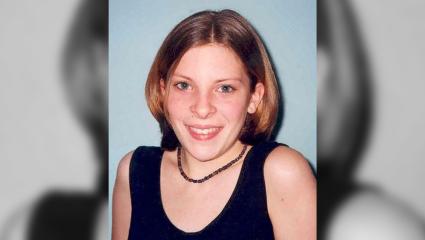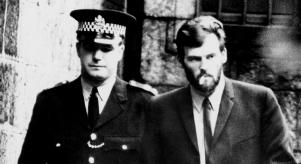
Who was The Camden Ripper?
Anthony Hardy, infamously known as 'The Camden Ripper', was a British serial killer whose crimes shocked the nation. During a brutal and chilling spree, Hardy murdered three women, though some believe his list of victims could extend to as many as nine.
Hardy earned his sinister nickname due to the gruesome methods he used to dispose of his victims, drawing comparisons to Jack the Ripper.
This article delves into the disturbing life of Anthony Hardy, uncovering the chilling details of his crimes and the horrifying way he targeted and killed his victims.
The life of Anthony Hardy
Anthony Hardy was born in Burton upon Trent, Staffordshire in 1951. Although he struggled with alcohol abuse and mental health issues, including a diagnosis of bipolar disorder later in life, he had a normal childhood.
As Hardy got older, it became clear that he was incredibly intelligent. He excelled academically, achieving high grades at school and college. He studied engineering at Imperial College London and obtained a degree in the subject.
Following his graduation, Hardy worked as a company manager. He went on to marry a woman named Judith and have four children with her. However, Judith divorced Hardy in 1986 following an arrest in 1982, wherein Hardy was accused of trying to drown her and kill her with a bottle of ice while they were living in Tasmania.
Although the charges were dropped, Hardy’s life began to spiral following his divorce from Judith. The aforementioned mental health problems led him to stay in various psychiatric hospitals in London.
During this time, Hardy stayed in hostels. Before long, he had a criminal record for drunk and disorderly conduct and theft. In addition, Hardy was also accused of raping a prostitute in 1998, though lack of evidence led to the charges being dropped.
There was a clear pattern of Hardy managing to evade justice when accused of heinous crimes against women. Unfortunately, this would culminate in three murders and another three suspected murders.
The murders
In 2002 – two years after Hardy moved to London – the police were called to the flats where Hardy resided. A neighbour made the call to report an incident of suspected vandalism.
Police investigated Hardy’s flat, and inside they found the body of 38-year-old Sally White behind a locked door. Sally was found naked with a bite mark on her leg and a wound on her head.
Thought to have been a sex worker, Sally’s death was attributed to a heart attack by Freddy Patel, the forensic pathologist who examined her. Hardy had been arrested but was released following this development.
It became clear later down the line that Hardy had more involvement in her death than was immediately acknowledged. Due to his inaccurate report, Patel would be suspended from practicing medicine in the UK.
In December of the same year, body parts of two women were found in bin liners near Hardy’s flat. The women had been strangled and then dismembered.
The victims were eventually identified as 29-year-old Elizabeth Valad and 34-year-old Bridgette MacClennan. The discovery led straight to Hardy, who was arrested the following week after going on the run.
Hardy’s trial and conviction
Following a significant fight with the police, Hardy was questioned. He was charged with the murders of Elizabeth and Bridgette – as well as Sally – after answering all questions with 'no comment'.
Hardy went on trial in November 2003. Despite his previous refusal to comply, he changed his plea to guilty. He was sentenced to life in prison.
Anthony Hardy died of pneumonia in November 2020 while serving his sentence in HM Prison Frankland, County Durham.
Other potential victims
There are other victims thought to have been murdered by Hardy, as their deaths are similar to his modus operandi.
Zoe Parker was a 24-year-old sex worker in London whose torso was found in the River Thames in December 2000. Her death is often thought to have been caused by Hardy due to the striking similarities in the way that her body was disposed of.
There were also two other murders close to where Hardy grew up that are also thought could have been committed by him.
A frustrating case of violence against vulnerable women
Hardy’s vicious murders of vulnerable women are disturbing enough as they are, but things get all the more grim when you consider how his spree could have ended before it even began.
Hardy’s mental health problems had previously been ignored. However, if circumstances in the case – such as Sally White’s cause of death – had been examined more thoroughly, he could have been brought to justice far sooner.













